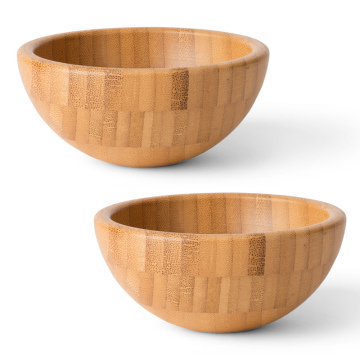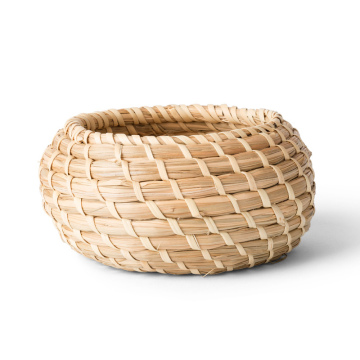The Culinary Landscape of Tokyo
Tokyo boasts a culinary landscape that is both rich in tradition and bursting with innovation, making it a true food paradise. The city’s culinary offerings reflect a unique blend of historic Japanese cuisine and contemporary gastronomic trends, woven together through centuries of cultural evolution. Traditional dishes such as sushi, sashimi, and tempura have been elevated to an art form, with chefs meticulously crafting each plate to highlight the freshness and quality of the ingredients. These time-honored cuisines are readily available in local eateries, from bustling markets to quaint izakayas, revealing the deep-rooted significance of food in Tokyo's history.
As culinary practices evolved, Tokyo embraced influences from various regions and cultures, further enriching its food scene. The development of street food, which dates back to the Edo Period, laid the foundation for the diverse and accessible dining options available today. Whether it is the popular yakitori stalls found in the winding alleys of Shinjuku or the vibrant food stalls at festivals, these offerings showcase the city’s ability to blend tradition with modern needs.
In recent years, Tokyo has witnessed the emergence of gourmet establishments and international cuisine that cater to a global palate. Michelin-starred restaurants, which champion localized ingredients and innovative techniques, highlight the city’s status as a culinary capital that attracts food enthusiasts from around the world. Fusion cuisine is increasingly prevalent, with dishes that combine Japanese elements with global flavors, illustrating the dynamic nature of Tokyo’s culinary landscape.
Ultimately, Tokyo’s food scene is characterized by its harmonious balance of the old and the new, with each dish telling a story of the city’s rich history and its forward-thinking spirit. This diversity not only showcases the expertise of its chefs but also emphasizes Tokyo's role as a crucial hub in the world of gastronomy.
A Trip to Tsukiji: The Heart of Fresh Seafood
Tsukiji Market, located in the heart of Tokyo, is a renowned destination for seafood enthusiasts and culinary adventurers alike. Famous for its vibrant atmosphere and extensive variety of fresh seafood, Tsukiji offers visitors a unique glimpse into Japan's rich fishing culture. In this bustling market, one can find everything from the freshest tuna to exotic shellfish, making it an essential stop for anyone seeking to experience Japan’s diverse seafood offerings.
Navigating the market can be an overwhelming experience due to the sheer number of vendors and the dizzying array of seafood products available. To make the most of your visit, it is advisable to arrive early in the morning to witness the market at its most vibrant. A good practice is to take a guided tour, which can provide valuable insights into the various types of fish and the best stalls to visit. Many vendors are happy to share their knowledge, offering samples and discussing their sustainable sourcing practices, which is increasingly important in today’s seafood industry.
While exploring Tsukiji, there are several must-try dishes that will tantalize your taste buds. Sushi, particularly Edomae-style, is a highlight, featuring expertly prepared fish that reflects the freshness of the morning catch. Sashimi, served with traditional dipping sauces and garnishes, provides a pure seafood experience that should not be missed. Additionally, grilled seafood skewers and seafood rice bowls complement the market's offerings, making for a delightful culinary experience.
The cultural significance of Tsukiji extends beyond its seafood; it serves as a symbol of Tokyo's connection to the ocean and the importance of sustainable fishing practices. Many vendors prioritize responsible sourcing, ensuring that future generations can also enjoy the riches of the sea. By supporting these practices, visitors can contribute to the preservation of Japan’s seafood heritage, reinforcing the market's role as a culinary and cultural hub in Tokyo.
Ramen: A Noodle Lover's Delight
Tokyo, a city renowned for its culinary landscape, offers a remarkable variety of ramen that reflects the rich tapestry of Japan’s food culture. Ramen is not merely a dish; it is a beloved staple that showcases regional variations and allows for creative interpretations. The two primary types of ramen broth - shoyu (soy sauce) and tonkotsu (pork bone) - serve as the foundation for many variations, but there’s much more to explore.
One notable ramen style is the shio (salt) ramen, known for its clear, light broth that allows the toppings to shine. In contrast, miso ramen, originating from Hokkaido, offers a hearty, rich flavor profile that has gained immense popularity in Tokyo. Shops like Ippudo and Ichiran have made their mark by perfecting these broths with unique recipes that awaken the taste bud. Ippudo is especially known for its tonkotsu ramen, which has a creamy texture and is balanced with sesame seeds and green onions, while Ichiran focuses on customizing your bowl, allowing diners to specify broth richness and spiciness.
Also worth mentioning is the Tsukemen, or dipping noodles, which have recently gained traction among locals. This style presents cold noodles served separately from a warm, concentrated dipping broth, ideal for those seeking a textural twist. Ramen enthusiasts visiting Tsuta, recognized as the first Michelin-starred ramen shop, can experience a delicate shoyu ramen made from a unique truffle blend, offering a gourmet twist on traditional ramen.
When savoring ramen in Tokyo, understanding the etiquette can significantly enhance the experience. First, slurp your noodles to express appreciation; it is considered polite and enhances flavor. Additionally, be prepared to communicate your preferences vividly, as many shops encourage customizing your bowl, whether adjusting noodle firmness or selecting toppings. By embracing these norms and exploring the diversity of ramen, one can truly appreciate Tokyo’s place as a ramen paradise, where every bowl tells a culinary story.
Exploring Local Eateries: Hidden Gems Across the City
Tokyo, a bustling metropolis renowned for its culinary excellence, boasts an array of hidden eateries that often go unnoticed by tourists. These local gems offer a unique glimpse into the authentic food culture of Japan, showcasing family recipes and local ingredients that are the foundation of its rich gastronomic heritage. From cozy izakayas tucked away in narrow back streets to bustling street food vendors serving delectable snacks, each hidden spot contributes to the vibrant tapestry of Tokyo's dining scene.
Among the lesser-known establishments, izakayas stand out as cherished social hubs where locals gather to unwind after a long day. One such izakaya, found in the Shinjuku district, is renowned for its homemade yakitori, crafted from fresh, local chicken and grilled to perfection. The owner, a passionate chef who learned the craft from his grandmother, emphasizes the importance of using seasonal ingredients. This dedication not only enhances flavor but also supports the area’s farmers, reinforcing the connection between eatery and community.
Street food vendors also play a significant role in Tokyo's culinary landscape. A visit to the Ameya-Yokocho market reveals an array of stalls selling everything from tantalizing takoyaki to rich, comforting ramen. Navigating this vibrant market provides an authentic experience, filled with aromatic delights that entice the senses. Engaging with the vendors often leads to delightful conversations, uncovering personal stories and the traditions behind their offerings, making each bite more meaningful.
To discover these hidden gems, venture beyond popular tourist hotspots. Locals often share tips on social media or food blogs, while exploring neighborhoods like Yanaka or Koenji can lead to unexpected culinary surprises. By approaching Tokyo's food scene with an adventurous spirit, visitors can enjoy a richer, more diverse experience that transcends conventional dining expectations.











